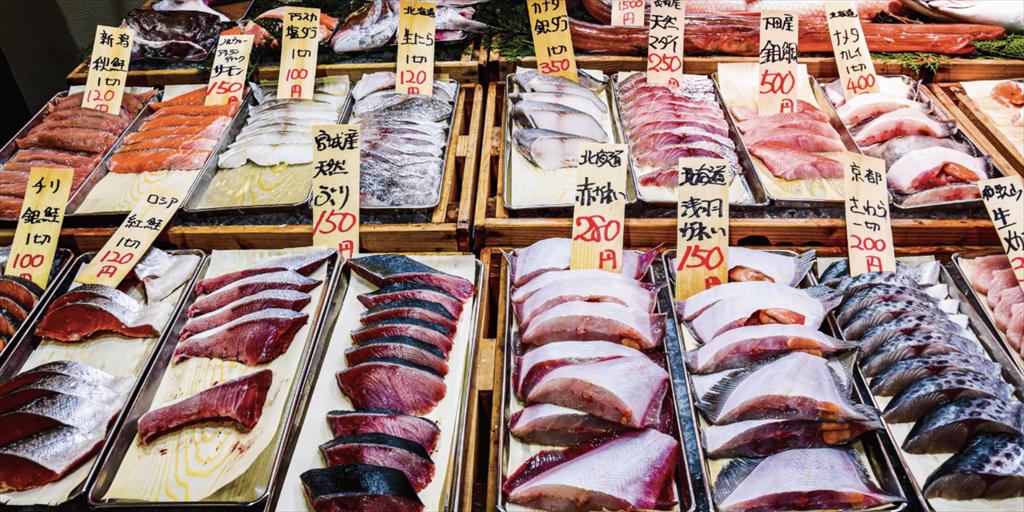(seafood.vasep.com.vn) In 2023, Japan was one of Vietnam’s top 2 seafood import markets, behind the US. While exports to the US significantly declined by 29%, and to other markets in the top 5 decreased by 16-18%, exports to Japan had the least decrease, only 12%.
Exports of many seafood species to Japan increased

The sharp decline in exports of whiteleg and black tiger shrimp to Japan was the main factor impacting seafood export turnover in this market. Meanwhile, many other products achieved positive growth in Japan this year.
Notably, crab exports to Japan increased by 36% compared to the same period in 2022, positioning crab as the third-largest-exported product to this market, only after white shrimp and salmon.
Exports of scads, pollock, mackerel, trachurus, flounder, amberjack, cat tiger shrimp, razorbelly scad and others have higher export sales to Japan than last year.
A significant portion of the products with growth in Japan this year are those relying on imported raw materials for processing and export, sustaining the income for processing workers, while optimizing the processing capacity and equipment in factories. For example, snow crab, salmon, pollock, mackerel...
Accumulated in the first 11 months of 2023, Vietnamese seafood exports to Japan reached 1.38 billion USD, of which white shrimp reached 302 million USD, black tiger shrimp reached 86 million USD, squid exports reached over 72 million USD and octopus reached nearly 70 million USD. Salmon exports to Japan reached 227 million USD, crab reached 87 million USD, scad reached 77 million USD. Estimated seafood exports to Japan in 2023 earned over 1.5 billion USD, down 12% compared to 2022.
Since June 2023, exports of whiteleg shrimp and black tiger shrimp to the Japan tend to gradually increase, however, due to a sharp decline at the beginning of the year, total exports of black tiger shrimp to Japan still plummeted by 37% while exports of whiteleg decreased by 23% over the same period in 2023.
After more than two decades of stable or falling prices, the Japanese economy has experienced a steady rise in prices over the past 1.5 year due to global geopolitical factors and a substantial weakening of the Japan yen against the US dollar. Since March 2023, food prices have increased at a rate of over 8% year-on-year, with some products experiencing by double-digit increases.
The Japanese government attributes the inflation in the seafood market to the escalating costs of fuel, food, and raw materials used in seafood production. In particular, the price of fishmeal, a primary ingredient in mixed feed for aquaculture, has fluctuated around 1,540 USD/ton since 2022, nearly twice the price from a decade ago. Since January 2022, retail prices of tuna, shrimp, tuna and salmon have increased significantly. In 2022, the general consumer price index for seafood increased by 14% compared to 2021, marking the highest increase since 2010.
The Japanese government estimates that per capita seafood consumption decreased by 14% by 2022. This decline in consumption is partly due to rising prices and a shift in consumer preferences towards other proteins like beef, pork, and chicken, which have become more accessible. Seafood is often considered more difficult to prepare than other proteins due to the necessity of removing fish skin and bones, which makes many people uncomfortable. Household seafood consumption (excluding eating out) is decling even faster, dropping from around 14 kg per capita in 1995 to just under 8 kg per capita in 2021, down 40%. As a result, Japanese manufacturers and retailers are making greater efforts to develop easily-prepared-seafood-products with value-added attributes (such as “sustainably produced”) to justify price increases.
In response to declining consumption, national and local government organizations have partnered with schools to promote the inclusion of seafood in school lunch programs. In recent years, Japanese fishermen, processors and distributors have taken the lead, not only supplying ingredients for school lunches but also contributing to the development of school lunch menus. Occasionally, fishermen even come to school to give lectures. The goal of these programs is not only to increase short-term consumption but also to form the habit of eating fish from an early age.
The types of fresh seafood commonly consumed also change over time. In 1989, squid and shrimp were the two most consumed products. In recent years, they have been replaced by salmon, tuna and amberjack, which are often sold as fillets.
Forecasts for Japan's economic growth in 2024 are not consistent, but in general, no significant breakthrough in demand is anticipated in this market. However, compared to other major markets such as the US, EU, China..., seafood trade with Japan is perceived as more stable.
An important point for Vietnamese businesses is that they will have to calculate carefully competitive prices and selling prices, at the same time taking advantage of consumption trends in Japan.